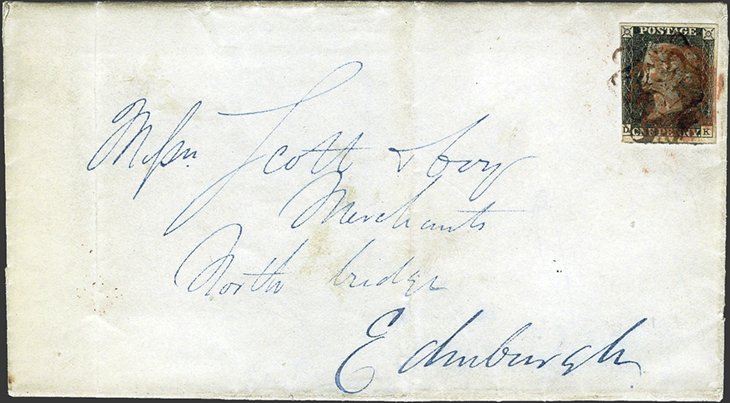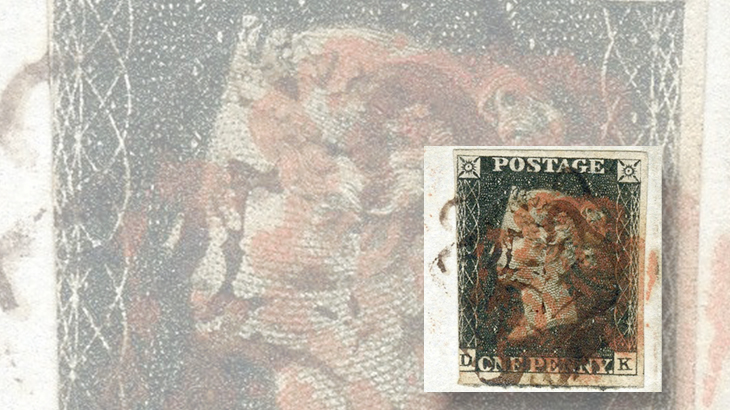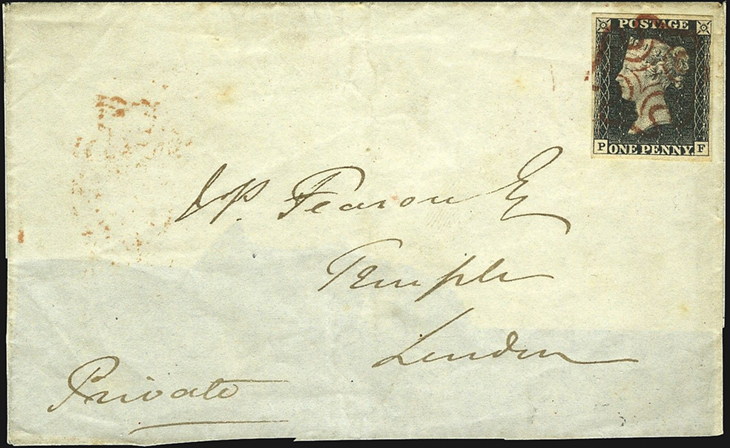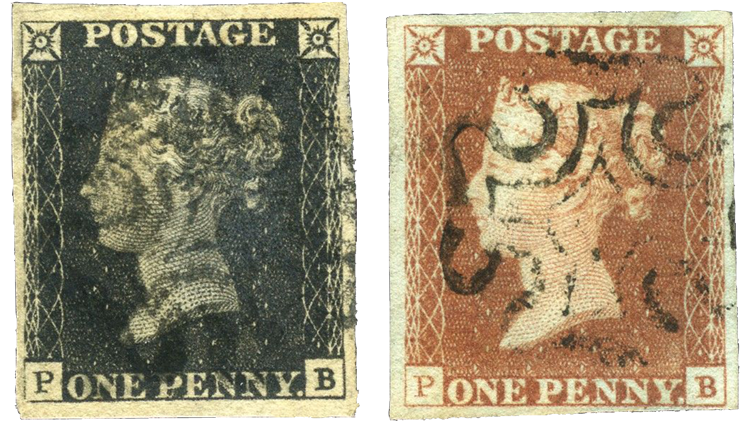World Stamps
Great Britain’s Penny Black evolved into many colors
By Sergio Sismondo
Great Britain’s Penny Black, the first stamp issued in the world, was at first printed in black. That, in itself, requires an explanation. Its creator, Sir Rowland Hill, was from the beginning worried that people could erase a cancellation and thus would be able to fraudulently reuse the stamp to prepay postage on more than one letter.
Attempting to avoid this transgression, Hill conducted a series of experiments with various inks that could be used for the cancellation of the stamp. After much consideration, it was settled that the stamp would be printed in black, and its standard cancellation would be a “Maltese cross” applied with red ink.
All substantial post offices in the British Isles were supplied with canceling devices in the form of Maltese crosses and with accompanying red ink pads (“1lb red die; 1 pint Linseed oil; half-pint of the droppings of Sweet Oil,” read the Red Composition formula for refilling the pads).
All the thousand-plus Maltese cross devices were handcrafted individually, and thus all differ in details from each other. This fact is of great interest to collectors, who can study the cancellations, separate them into various categories, and can, in some cases, match them to their town or city of origin.
The red cancel ink, also produced in individual small batches, varies from vermilion, to red, to carmine or even to reddish brown.
The stamp was issued May 6, 1840, and its consequences for businesses, their price lists, advertising, shareholder’s meetings, personal correspondence, announcements of births and deaths, matrimonials, and myriad other matters, were truly revolutionary. The socioeconomic consequences of the issuance of the stamp is a different subject, to be discussed elsewhere.
What is more relevant here is that indeed it was found stamps were being cleaned of their cancellations, recycled, and reused.
Hill set out to work with determination again and tested inks of different chemical compositions. Thus, in August 1840, a major decision was made: stamps would be printed in red and the cancellations would be struck with black ink. It was a reversal of the original scheme: red on black became black on red. Black ink was more difficult to remove, and heavy chemical applications would destroy the red color of the basic stamps. Brilliant! It worked.
But printing was delayed until December 1840 while extensive studies were made to determine the optimal inks to be utilized both for printing the stamps and for their cancellations.
Today it is possible for collectors with extra-deep pockets to obtain examples of stamps defaced by these experiments, a few of them being in the private market.
The greatest portion of this material, however, is housed in public archival collections in Great Britain: the Royal Collection, British Library, British Museum, and National Postal Museum.
Penny Blacks were printed from a total of 12 plates known as: 1a, 1b, and 2 through 11. The same plates were to be utilized for printing the red stamps. But not all plates were in such good condition. Those that were viable were pressed into service. Seven printing plates were found to be in good shape. They were: 1b, 2, 5, 8, 9, 10 and 11.
Work progressed steadily at the Perkins, Bacon printing shop in London. Sheets of the red stamps were accumulated while printings in black were being phased out. For instance, from plate 11, 700 sheets were printed in black on Feb. 1 and Feb. 2, 1841. From Feb. 3 onward, stamps from plate 11 were printed in red only. Penny stamps printed in red began to appear at post offices on or about Feb. 10, 1841.
Due to the change of color scheme, the distribution of red and black Maltese crosses varies greatly by plate. On stamps from plates 1-7, red is more common than black. On stamps from plates 8 and 9, red is less common than black. On stamps from plates 10 and 11, red cancellations may be described as rare to very rare. Therefore, obtaining complete sets of Penny Blacks from all plates with red cancellations is a very difficult task indeed.
On this subject there is another anomaly to look for. At most post offices, when the black ink pads went into widespread use for canceling stamps, the red ink pads remained in use for other purposes.
Maybe from force of habit, postmasters and clerks made the error of canceling Penny Blacks on letters with the red ink pad, which was no longer to be utilized for that purpose. Then, perhaps noticing the error, they might have overstruck the red cancellation with a black one, resulting in stamps with both black and red Maltese cross cancellations. These are very scarce.
Shown nearby is a cover internal to Scotland bearing a Penny Black from plate 5, with both red and black cancels; such covers are very rare.
It follows from the method of production that from plates 1b, 2, 5, 8, 9, 10 and 11 it is possible to find stamps printed in black and in red, which, aside from their color, are otherwise identical. Such couplets are known as “matched pairs,” and are in great demand.
Pictured nearby is a matched pair printed from plate 1b, lettered “PB.” As can be seen from the lettering, the two stamps are identical, except for their colors and cancels. Other details can be seen under magnification.
The black stamp was printed June 8, 1840, and the red stamp was printed from the same plate on Dec. 30, 1840. The first was canceled in red, and the second was canceled in black.
In addition to red and black, Maltese cross cancellations struck on Penny Blacks in other colors are known, including blue, magenta, ruby, violet, orange, vermilion and brown.
Suffice it to say that these are rare to very rare, seldom encountered, and command huge prices at major auctions.
The last picture is of a cover dated July 25, 1840, franked with a stamp printed from plate 1a, canceled with a purplish magenta Maltese cross.
The vast majority of red 1d stamps were not printed from the black plates. Imperforate Penny Reds were printed from 177 plates, of which only seven were the original ‘‘black plates.” In addition, many more plates were made and used to print perforated Penny Reds.
For the collector of classic Great Britain stamps, I recommend the acquisition of a reference that facilitates the determination of each Penny Black’s printing plate; or alternatively, submission of Penny Blacks to expertization. You should always request certificates that include determination of the printing plate of each item submitted.
All images are from the philatelic archive of Liane and Sergio Sismondo.
MORE RELATED ARTICLES
Headlines
-
US Stamps
Oct 7, 2024, 3 PMMcMurtrie dismissed as APS education director following Sept. 21 arrest
-
US Stamps
Oct 7, 2024, 12 PMVasiliauskas named president of Mystic Stamp Co.
-
US Stamps
Oct 6, 2024, 5 PMApgar souvenir card available
-
US Stamps
Oct 6, 2024, 4 PMFirst Continental Congress and U.N. stamps receive Scott catalog numbers









